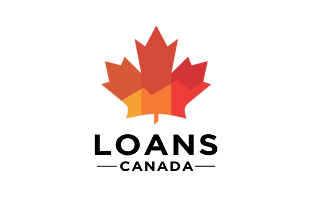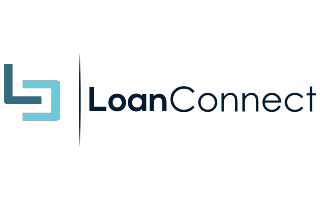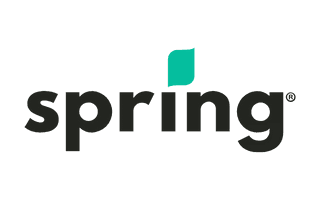A top-of-the-line DSLR or mirrorless camera costs several thousands of dollars. So if you’re shopping for a new camera, you may need to compare ways to finance a camera in Canada. The good news is that from in-store financing to personal loans and even layaway, there are several options to choose from.
Keep reading for the lowdown on six options for camera financing in Canada, how they work, and their pros and cons.
1. Buy and finance a camera through the store
- How it works: In-store financing is a convenient way to finance a camera in Canada, with retailers teaming up with third-party finance companies to offer flexible payment options. It’s easy to apply whether you’re purchasing in-store or online, allowing you to spread the purchase price out into monthly payments for anywhere between 6 and 36 months. And if your credit score is high enough, you might also qualify for 0% financing.
- Who it’s suited for: People with good credit looking for quick financing.
Pros
- 0% financing available
- Convenient and easy
- Buy Now Pay Later available
Cons
- Going direct to the retailer’s finance provider means you might not shop around
- Make sure you check whether any fees apply
- High rates for bad credit
2. Finance a camera using a personal loan
- How it works: If you want to take out a personal loan to buy a camera, there are plenty of options available. Banks, credit unions and a range of alternative lenders all offer suitable loans, but you’ll need good to excellent credit to qualify with a traditional lender. Online lenders are willing to work with borrowers who have bad credit, provided you meet minimum income and employment requirements. Loan terms commonly range from 6 to 60 months, but longer terms are available.
- Who it’s suited for: People with good credit.
Pros
- Multiple options available
- Options for bad credit borrowers
- Bad credit loans available
Cons
- High rates if you have bad credit
- No 0% financing available
- Strict eligibility criteria at banks and credit unions

- Accepts bad credit borrowers
- Easy online application
- Quotes from multiple lenders
- Access cash within 1-3 business days

- Accepts bad credit borrowers
- Quotes from multiple lenders
- Pre-approval in 5 minutes
- Funds in as little as 24 hours
3. Buy and finance a camera through the manufacturer
- How it works: If you’re buying a camera direct from the manufacturer, camera manufacturers like Canon, Sony and Nikon all offer access to financing. Terms of up to 36 months are available, while borrowers with excellent credit may also be able to access 0% financing.
- Who it’s suited for: People looking for convenient financing.
Pros
- Simple and convenient
- Buy Now Pay Later and traditional financing available
- 0% financing available
Cons
- High rates for poor credit
- Not available from all manufacturers
- 0% may only apply for an introductory period
4. Finance a camera using a credit card
- How it works: A credit card with a low purchase rate is another easy way to finance a camera in Canada. Some cards offer rates as low as 8.99%-12.99%, and paying is a simple matter of swiping your card at the checkout or entering your card details online.
- Who it’s suited for: Camera buyers looking for a convenient financing option they can also use to pay for other expenses.
Pros
- Convenient — you don’t need to apply for new financing
- Earn reward points on your credit card
- Shop in-store or online
Cons
- 0% financing not available
- Credit card annual fees also apply
- Using a big portion of your credit limit can hurt your credit score
5. Layaway
- How it works: Another camera financing option worth considering is to buy a camera on layaway. Shop in-store or online and put down a deposit on a camera you like, and the store will then put it on hold for you. You’ll then have to pay off the remaining balance within a predetermined period (typically up to six months), either with a lump sum or regular weekly or monthly installments.
- Who it’s suited for: People with bad credit or who don’t want to pay any interest.
Pros
- No interest charges
- Bad credit not a problem
- You don’t need to borrow any money
- You can buy a camera when it’s on sale
Cons
- Limited availability
- You need to pay off the camera in full before you can use it
- Minimum deposit requirements apply
- You only have a limited period of time to pay off the remaining balance
- Cancellation and restocking fees
6. Rent-to-own
- How it works: Some camera retailers offer rent-to-own or leasing programs where you sign up to a monthly payment plan that allows you to rent and use a camera. Once the rental period ends and you’ve made all your on-time payments, the camera is yours. However, the total amount you pay over the rental period will typically end up being significantly more than the camera’s price tag.
- Who it’s suited for: Camera buyers with bad credit.
Pros
- Bad credit is accepted
- Use the camera while you pay it off
Cons
- You’ll pay much more than the purchase price
- Watch out for hidden fees
- Only available from limited retailers
Can I use Buy Now Pay Later to purchase a camera?
Yes, you may be able to use But Now Pay Later (BNPL) financing to purchase a camera. Whether or not it’s available depends on two factors:
- Where you buy your camera and whether the retailer has partnered with a BNPL provider.
- How much the camera costs and whether you can access a high enough credit limit.
BNPL plans let you split the camera purchase price into smaller equal payments — a common structure is paying 25% of the purchase price at checkout, then three more 25% payments at two-week intervals.
So if you were buying a $1,000 camera, you’d pay $250 at checkout and then make a $250 payment every two weeks over a six-week period. There’s typically zero interest to worry about, but late fees apply if you miss a payment.
However, you may not be able to access enough financing with BNPL to cover the cost of a camera. For example, Sezzle has a maximum credit limit of $2,500, while other providers limit you to purchases of under $1,000. You’ll also need to be careful not to buy a camera on impulse or overstretch your budget, two of the most common BNPL mistakes made by Canadians.

Am I eligible for 0% camera financing?
Just because a store advertises 0% financing, that doesn’t necessarily mean such a low rate will be available to you. You’ll need to satisfy specific criteria to qualify for a 0% camera financing offer, such as:
- Credit score requirements. You’ll need good to excellent credit to be able to access 0% financing. Higher rates apply if you have fair or poor credit.
- Income and employment requirements. The finance provider will check to make sure you’re in steady employment and meet minimum monthly income requirements. They’ll also check how much of your income goes towards existing debt payments, which is also known as your debt-to-income ratio.
- Purchase requirements. Retailers may limit their 0% finance offers to specific products, while you may also need to exceed a minimum purchase amount (such as $500) to access an offer.
Camera financing with bad credit
The good news is that you can still finance a camera if you have bad credit.
But before you start comparing camera financing options, think about whether you actually need a new camera right now. After all, smartphone cameras are capable of producing truly impressive images these days, and you might decide that a camera is a luxury purchase. If so, you could end up much better off financially if you pay down your existing debts first or improve your credit score before applying for camera financing.
That said, if you are looking for options for bad credit, consider the following:
- Personal loan. While banks and credit unions have strict eligibility criteria, online lenders offer bad credit personal loans. However, steep interest rates apply. Learn more about the best bad credit loans.
- Credit card. If you already have a credit card, you may be able to use it to finance a camera. It’s a simple and convenient payment option, and you can take advantage of any interest-free days to pay off as much of the purchase price as possible. However, using up a big portion of your credit limit can have a negative impact on your credit score and limit the funds available to you to cover emergency expenses.
- In-store or manufacturer financing. If the retailer or manufacturer is partnered with a Buy Now Pay Later provider, you may be able to qualify for a BNPL plan. However, low purchase limits mean many cameras will be too expensive for these plans.
- Layaway. You’ll typically only need to provide proof of ID and pay a deposit to qualify for layaway, but you’ll need to pay the full purchase amount before you can get your hands on the camera.
- Rent-to-own. Bad credit typically won’t stop you qualifying from a rent-to-own program. But these plans aren’t widely available and are also quite an expensive option.
Can I get no credit check camera financing?
Yes, it is possible to finance a camera with no credit check. If you’ve already got a credit card with sufficient credit, or if you choose layaway, no credit check is required.
Some online lenders also offer no credit check loans. If you’ve got a steady job, meet minimum income requirements and have a low debt-to-income ratio, there’s a good chance you’ll qualify for a loan. Compare installment loans to find out what’s available.
How much does it cost to finance a camera in Canada?
Camera prices vary greatly depending on the type of camera you buy. While you can pick up a compact camera for as little as $350, high-end DSLR and mirrorless cameras can cost up to $10,000 or more. Add extra lenses and accessories to your cart and the purchase price can balloon out even further.
Representative example: Tashi finances a new camera
Tashi has been bitten by the photography bug and wants to invest in a dSLR camera. She finds the Canon camera she wants, but once she adds an extra lens to her shopping cart, the $5,000 price tag is a bit much for her to pay upfront on her current budget.
Tashi decides to shop around for the best camera financing option. The results of her comparison are shown in the table below.
| Lender A | Lender B | Lender C | Lender D | |
|---|---|---|---|---|
Amount borrowed | $5,000 | $5,000 | $5,000 | $5,000 |
Interest rate | 10.99% | 0% | 0% | 11.99% |
Loan term | 24 months | 18 months | 12 months | 36 months |
Admin fee | $0 | $99.99 | $59.99 | $0 |
Total interest | $592.38 | $0 | $0 | $977.72 |
Total cost | $5,592.38 | $5,099.99 | $5,059.99 | $5,977.72 |
Monthly payment | $233.02 | $283.33 | $421.67 | $166.05 |
Bottom line
If you need to finance a camera in Canada, there are several options to choose from. Compare all your options to find the best rate and lowest fees, and be wary of steep interest rates if you have bad credit.
Frequently asked questions
More guides on Finder
-
How to finance tires & rims in Canada
Compare three tire financing options to find the best rates in Canada.
-
How to finance a Nintendo Switch
From BNPL to credit plans, explore practical ways to break up the cost of the Nintendo Switch 2.
-
How to finance a Samsung Galaxy in Canada
Your guide on five ways to finance a Samsung Galaxy smartphone in Canada.
-
Options and costs for financing landscaping projects
Compare loan options to finance your landscaping project.
-
5 ways to get MacBook financing in Canada
Get the MacBook you want at a price you can afford.
-
5 ways to get appliance financing in Canada
If you’re not looking to pay for your next household appliance in cash, here are 5 ways to get appliance financing in Canada.
-
7 cell phone financing options in Canada
Learn different ways to finance the latest iPhone, Galaxy or Pixel, including easy options that don’t require a down payment.
-
iPhone financing in Canada
Find out your options for iPhone financing in Canada.
-
How to finance a hot tub
Soothe those aching muscles or just hang out with loved ones without having to shell out thousands up front.
-
How to finance a septic tank
Find out how to finance a septic tank.

